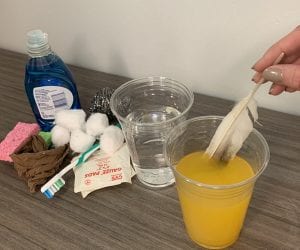It’s the start of a new year, and a great time to start planning for the science fair. This year, encourage students to go green with an environmentally-themed project. Whether your scholars are investigating recycling, surveying a local creek, or exploring green technologies, an environmental project will beat the socks off a baking-soda-and-vinegar volcano any day of the week.
Science Fair Ideas on Consumption in Your Community
With the global human population nearing 8 billion people, and many of the Earth’s resources being finite, human’s consumption of resources is a hot topic in environmental science. Help student start the quest for the perfect project by exploring resource use and consumption in your own community with the following science fair ideas:
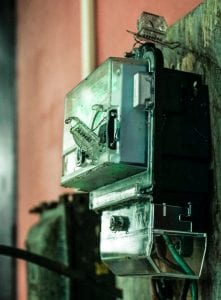 1. Do a Home Energy Audit. How much electricity does your family use? How much water? How much trash does your family produce? How much is thrown away versus recycled? What is your family’s carbon footprint? Once you have data about the resources your family consumes, what variable can you change, and what kind of difference does it make in your consumption levels?
1. Do a Home Energy Audit. How much electricity does your family use? How much water? How much trash does your family produce? How much is thrown away versus recycled? What is your family’s carbon footprint? Once you have data about the resources your family consumes, what variable can you change, and what kind of difference does it make in your consumption levels?
There are many ways to quantify the resources we use in our daily lives. Elementary students can learn about measuring their water consumption with the lesson Every Drop Counts. High School students can learn about measuring the land and water needed to support their lifestyles with Watch Your Step!
2. Do an Environmental Survey. Is there a natural space that you love in your community? Is there a park or stream? Make observations about the ways that people impact that space: count and categorize trash, note erosion from foot and bike paths, notice sound levels from surrounding roads and development. How do you think humans are changing these natural spaces, and how can you test to see if you are right? Are the nitrates levels higher downstream from a subdivision? Is there more diverse animal life farther away from roads? Can you map the sources of garbage in a creek by your school?
Science Fair Ideas on Green Tech
People around the globe are experimenting with innovative technologies to address the impacts of human activity. These science fair project ideas focus on green technologies that combat the challenges of population growth.
3. The Value of Wind Power. Make a model wind turbine. KidWind is a great place to start learning about model turbines and finding parts. What blade design produces the most electricity?
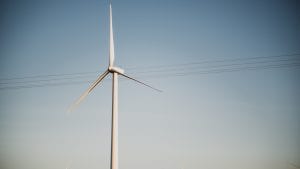
4. The Breakdown of Bioplastics. Bioplastics claim to look, feel, and function like traditional petroleum-based plastic, but they are made of plant materials, and can theoretically be composted. At what temperatures and under what conditions do bioplastics break down efficiently?
5. The Benefits of Vertical Farming. Vertical farming may be a way to increasing food production without increasing agricultural land. What lighting system can efficiently grow spinach with the least amount of electricity in a vertical farm?
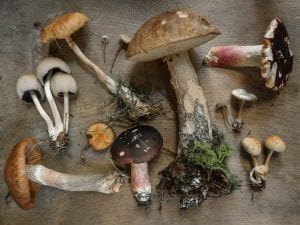 6. Fungus and Decomposition. In a couple places across the country, people can choose to be buried in a mushroom burial suit after they pass away. The suit helps the human body decompose into usable nutrients for plants and animals. Not all fungus is equally good at decomposition. Explore the impacts of fungus on muscle tissue by experimenting on which strains of fungus are best able to decompose meat in a compost bin.
6. Fungus and Decomposition. In a couple places across the country, people can choose to be buried in a mushroom burial suit after they pass away. The suit helps the human body decompose into usable nutrients for plants and animals. Not all fungus is equally good at decomposition. Explore the impacts of fungus on muscle tissue by experimenting on which strains of fungus are best able to decompose meat in a compost bin.
Science Fair Ideas on Lessening Human Impacts
Caring for existing resources. These next project ideas look at ways to mitigate the negative impacts of human activity on vital natural resources.
7. Oil Spill Project. Imagine an oil spill in the Gulf of Mexico. What is the best way to clean up the spill? What materials work best and are least disruptive to plants and animals in the ecosystem? Students can explore this process in the classroom lab Like Oil and Water. Older students may research cutting-edge techniques to remove oil and experiment with making their own: like testing homemade milkweed fiber sponges or redesigning a hay skim.
8. Impact of Single Use Plastic Bags. Many single-use plastic bags enter local waterways and end up in the oceans. While some families and communities are switching to reusable bags, many places still use single-use. Which reusable bags are the best? Which ones last longest and are the best at withstanding wear and tear? Which ones are used most often and preferred by shoppers?
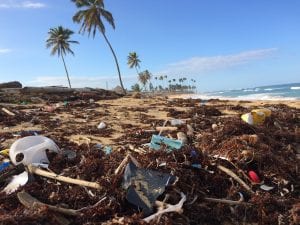
9. Composting to Reduce Waste. Composting can help reduce the amount of trash going into landfills, and can help replenish nutrients in depleted soil. It also makes a great laboratory for a variety of experiments. Scraps into Soil Lab helps elementary schoolers answer the question: what types of materials break down fastest in compost. You can also explore various types of compost strategies with everything from which worms help compost decompose fastest, to how does pH impact decomposition.
Once the compost creates usable soil, experiment with how it’s used. What ratio of compost to local soil is best for growing a local agricultural product? What types of trash, after being composted, make the best soil for growing your favorite fruit or vegetable?
Next Steps for Starting a Science Fair Project
Now that you have nine fresh new ideas for the science fair, be sure to set your students up for success. Read our post on How to Write a Strong Science Fair Question to ensure student develop a single, testable problem question. The post includes a printable “cheat sheet” for your students as they work to develop their green science fair ideas.
Image credits: Electric meter (rahul g on Unsplash); Wind turbine (Andrew Schultz on Unsplash); Mushrooms (Andrew Ridley on Unsplash); Beach litter (Dustan Woodhouse on Unsplash)



